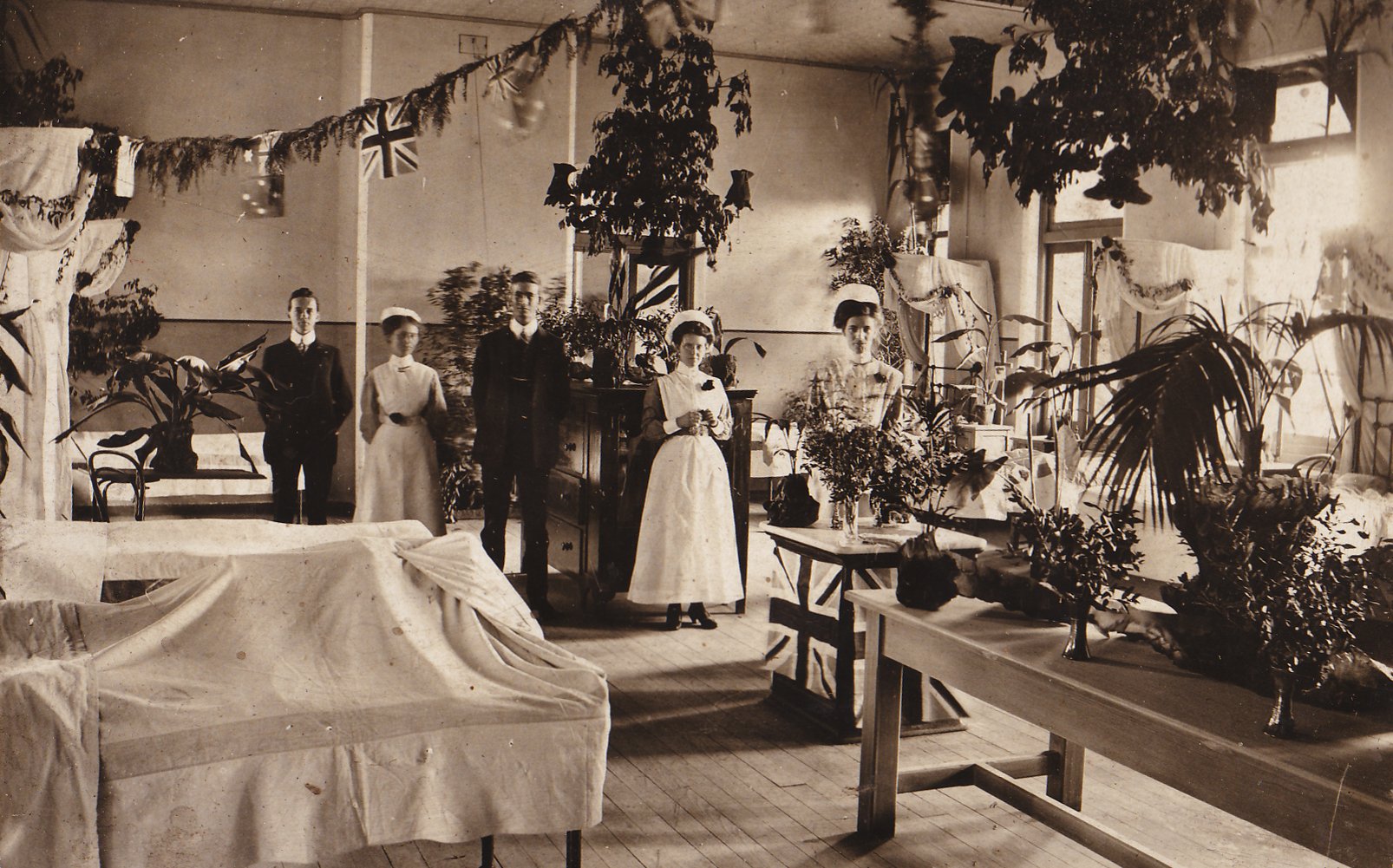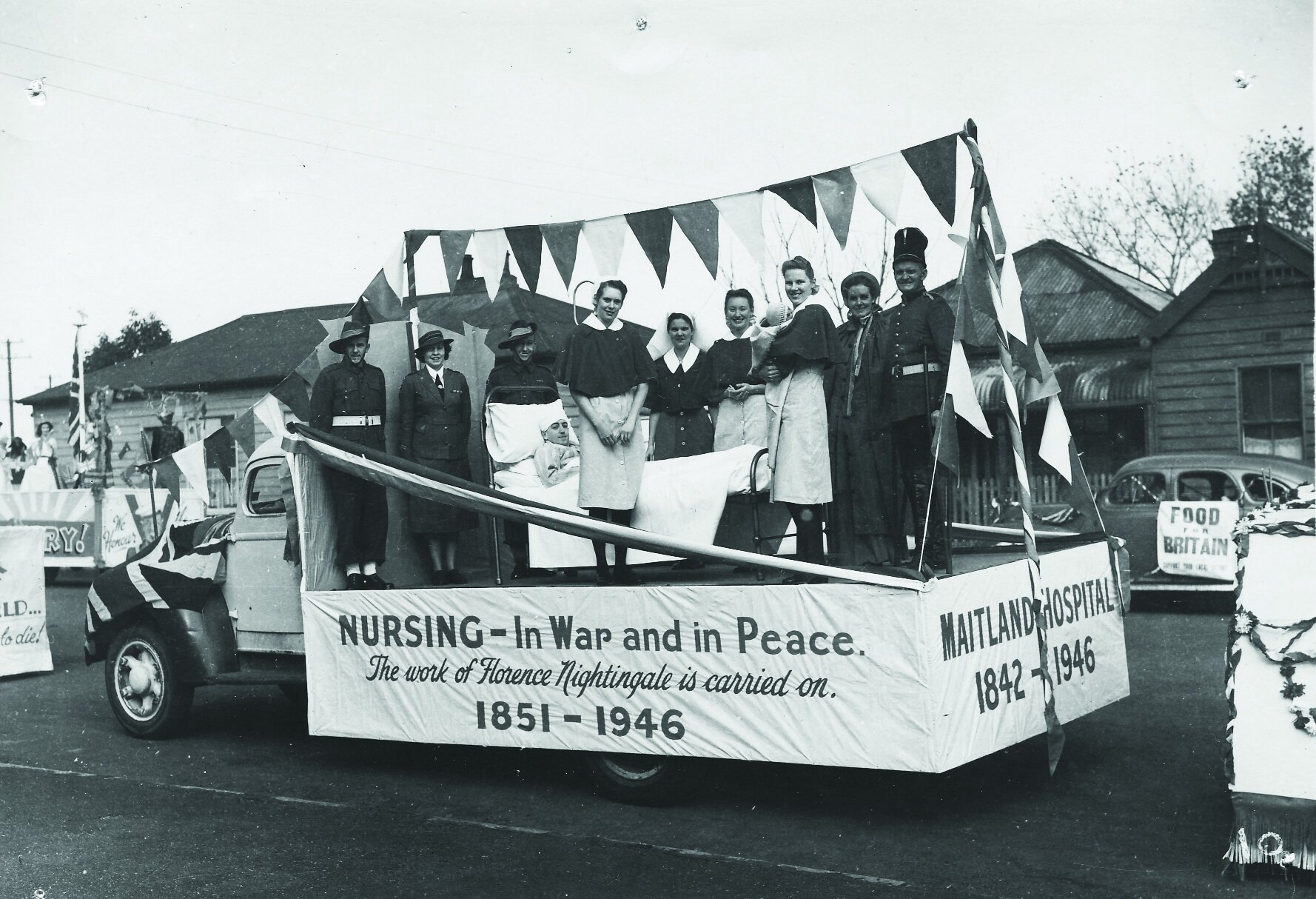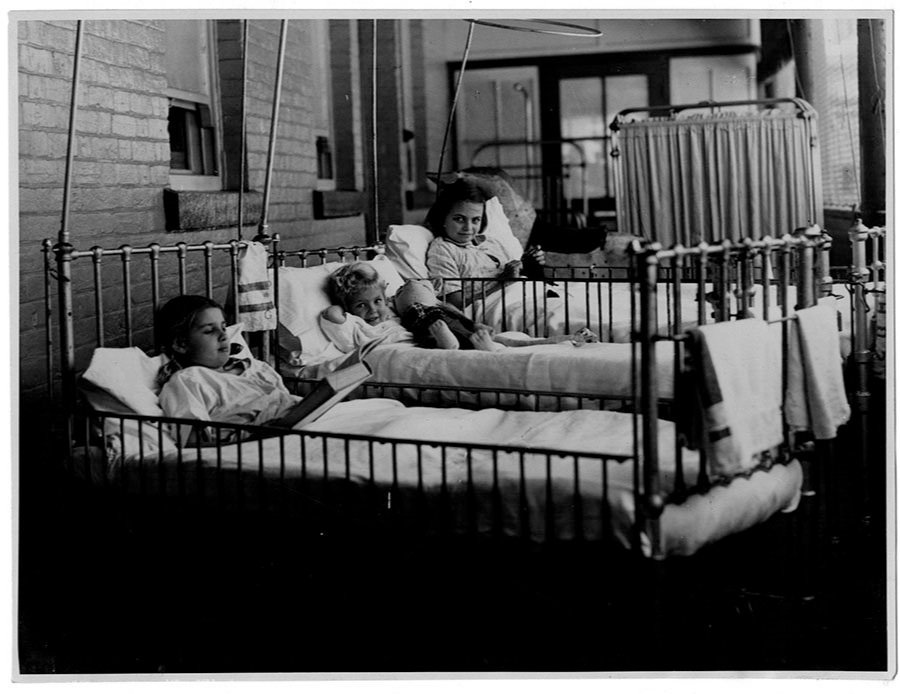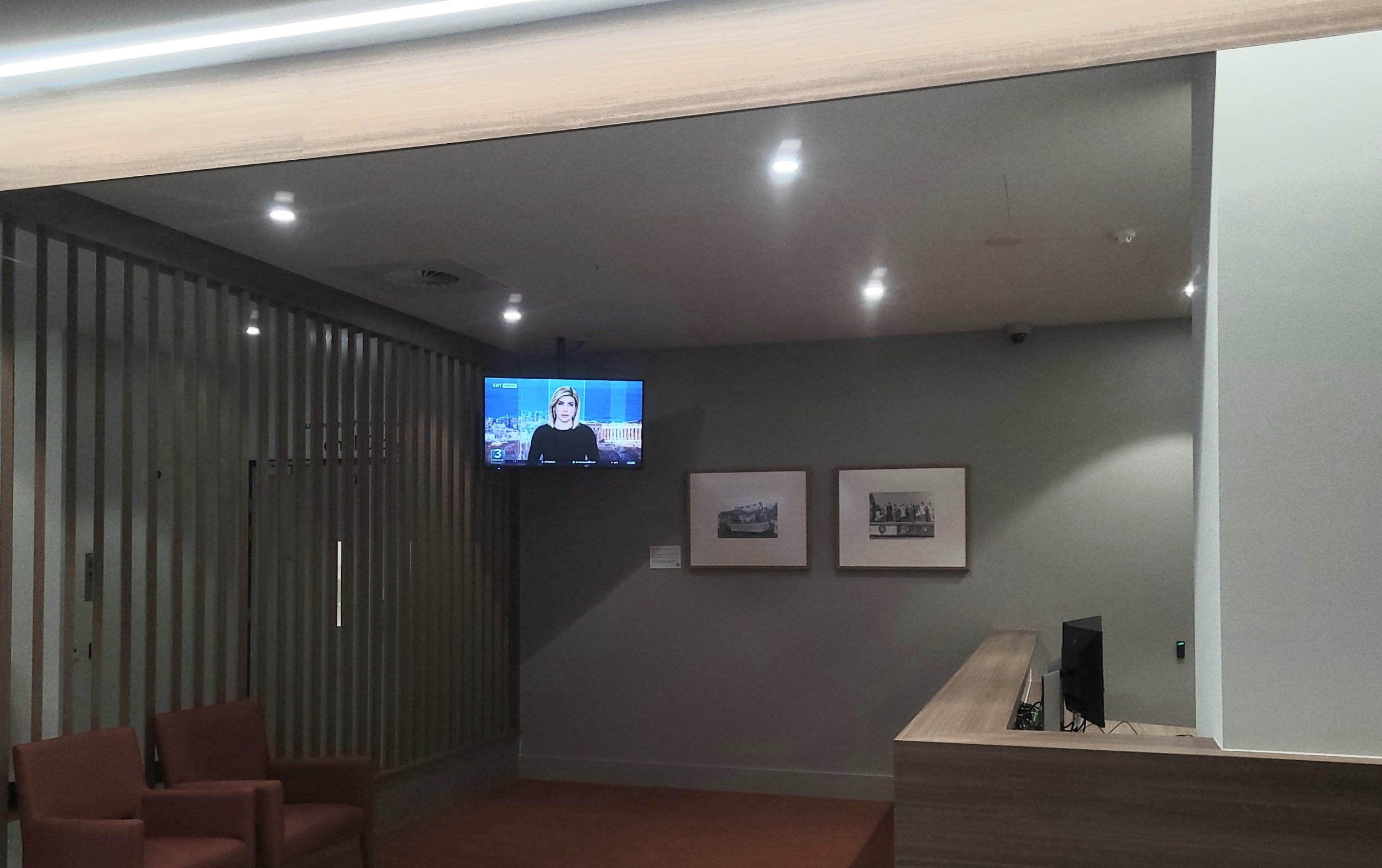We’re waiting with you.
Visits to Outpatients in a hospital often involve sitting around and waiting for appointments.
The Outpatients’ wait areas in the new Maitland Hospital acknowledge this. On the walls are photographs from the Maitland Hospital Collection that capture moments of waiting, watching, helping and lounging around as well as celebratory and commemorative occasions.
Click on the images below to open a larger view of each one.
The Christmas photograph is one of a set of six pasted onto a mountboard with hand drawn decorative borders and the heading ‘Christmas decorations 1911’. It is a reminder that, from early in the hospital’s history, there are descriptions of the bright and cheerful Christmas decorations created by staff in different parts of the hospital.
Visit Roast beef, plum pudding and Santa Claus for descriptions of Christmas in the hospital at different times.
The photograph of the Women’s Hospital Auxiliary members evokes the role of volunteers. Maitland Hospital has always depended on, and benefitted from, volunteers. Their contributions were and are regularly reported in the local newspapers. The photograph of the Women’s Auxiliary members was published in the Newcastle Morning Herald, 24 June 1938, with the descriptive comment that these women ‘make sewing for the hospital part of their work’.
Visit One of our best feelings … charity for more details on the important role of volunteers.
University of Newcastle Special Collections has digitised a film of Maitland’s 1946 Victory Parade. At around 5:18 minutes into the film you can see the hospital float.
Over the years, Maitland Hospital staff have participated in celebratory and commemorative events for the hospital and for the community. These two photographs have hospital staff participating in parades through the streets of Maitland.
The Victory Parade float honours the role of nurses during war and peace from the time of Florence Nightingale. The parade was a celebration of the end of the Second World War. It was one of many similar parades held throughout Australia. The Maitland procession was described as ‘impressive’ with ‘about 40 gaily coloured floats’ that ‘took half an hour to pass a given point’ (Newcastle Morning Herald, 10 June 1946).
The Captain Cook bicentenary float also depicts nursing across time. On this occasion the period covered starts with the arrival of Captain Cook on the east coast of Australia. The Cook bicentenary events in 1970 provoked protest for commemorating what was, and is, regarded as the start of the invasion and colonisation of Australia.
‘Maitland Bi-centenary 1970 procession award’
(Maitland Hospital Collection 265)
This red satin ribbon with yellow lettering and trim was presumably awarded to the hospital float depicted in the above photograph.
Sisters Reta and Pat Fleming, who both trained at the hospital, are in the hospital float photographs. Visit My aunts trained at the hospital for details about the Fleming sisters and for information about who is in the photographs.
Many of the photographs in the Maitland Hospital Collection are ones taken for publicity and reporting purposes. Smiling, posing and creating positive visual messages are key elements.
The photograph of the smiling little girl with her stuffed toy was reproduced in the hospital’s centenary booklet The Maitland Hospital 1842-1942 with the caption ‘happy days in hospital’. It is a detail from a wider photograph of the children’s ward (see left).
(left) Children’s ward verandah, early 1940s.
(Maitland Hospital Collection 165.134)
The photograph of the donor chairs was reproduced in the hospital’s 1982 annual report with the caption: ‘Carnival Committee donation: Carnival Committee secretary, Ray Groves, tests one of two blood donor chairs presented by the Committee to the Blood Bank. Looking on are Committee President Guy Duggan, pathologist Dr R Ibanez and CEO Ron Pickett.’
The photographs on show in the Outpatients wait areas, new Maitland Hospital, January 2022.
First posted: 19 January 2022
Updated: 25 October 2022











